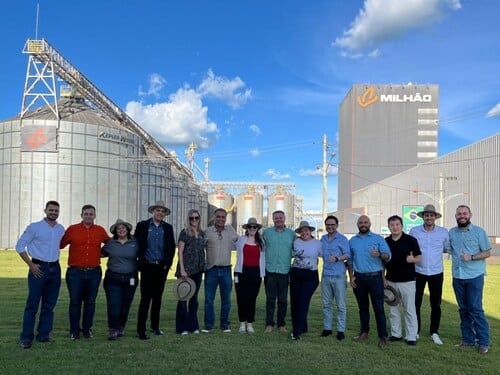Key Takeaways:
- PepsiCo, in collaboration with Griffith Foods and Milhão, launches a direct farmer incentive pilot program in Brazil’s Cerrado region.
- The initiative combines Payment for Practice and Payment for Outcomes models to reward regenerative farming practices.
- The pilot covers 7,000 acres, with plans to scale to 30,000 acres by year three.
- Total investment from partners is expected to reach $1 million.
- The program aims to enhance soil health, reduce emissions, and strengthen climate resilience in one of the world’s key agricultural frontiers.
PepsiCo Announces Regenerative Agriculture Pilot in the Cerrado
PepsiCo (NASDAQ: PEP), together with Griffith Foods and Milhão, announced the launch of a new direct farmer incentive program designed to accelerate regenerative agriculture in Brazil’s Cerrado region. The Cerrado, one of the planet’s most biodiverse ecosystems, plays a crucial role in global food production, contributing significantly to Brazil’s corn and soybean output.
The pilot seeks to mitigate challenges such as deforestation, soil degradation, and climate stress by introducing a hybrid Payment for Practice and Payment for Outcomes model. This approach provides upfront payments to farmers for adopting sustainable inputs like composting and biological fertilizers, while also offering bonuses tied to measurable reductions in agrochemical use.
“This program tackles one of the biggest barriers to the adoption of regenerative agriculture: the financial risk farmers face when transitioning to new practices,” said Thais Souza, Sustainability Lead at PepsiCo Brazil. “By providing direct economic incentives, we’re helping facilitate outcomes such as improved soil health, reduced greenhouse gas emissions, and climate resilience.”
Pilot Scope and Investment Plans
The PepsiCo initiative will initially cover 7,000 acres and aims to expand to 30,000 acres—equivalent to PepsiCo’s full corn sourcing volume in the region—by the third year. Co-funded by PepsiCo and Griffith Foods, with additional contributions from Milhão, the total investment is projected to reach $1 million.
According to JP Cavalcanti, Senior Director and Market Supply Officer for PepsiCo Brazil Foods, “This is more than a pilot—it’s a blueprint for efforts to transform agriculture in one of the world’s most critical regions. We’re proud to lead this effort and invite others to join us in scaling regenerative solutions that can benefit farmers, ecosystems, and food systems.”
Partner Collaboration and Industry Alignment
Griffith Foods emphasized the program’s role in driving systemic sustainability change through cross-industry collaboration. “At Griffith Foods, we see this collaboration as part of our journey to help nourish the world and transform the food system,” said Nicholas Costa, Regional Sustainability Director for Griffith Foods Central and South America. “By sharing costs and aligning on sustainability ambitions, PepsiCo, Griffith Foods, and Milhão are demonstrating how competitors can work together pre-competitively with the aim of driving systemic change.”
The partnership reflects PepsiCo’s broader sustainability and regenerative agriculture strategy, which seeks to scale solutions that improve farming practices while maintaining supply chain stability.
Supporting Climate Resilience and Sustainable Sourcing
Guided by PepsiCo’s Climate Resilience Platform—an open-access tool that helps agricultural stakeholders plan for and adapt to climate change—the program identifies practices most relevant to the Cerrado’s unique environmental conditions. These include soil restoration, nutrient cycling, and water conservation measures that strengthen both productivity and long-term ecological resilience.
The initiative underscores PepsiCo’s continued investment in sustainable sourcing, demonstrating how private-sector collaboration can support climate adaptation while securing reliable agricultural supply chains.


